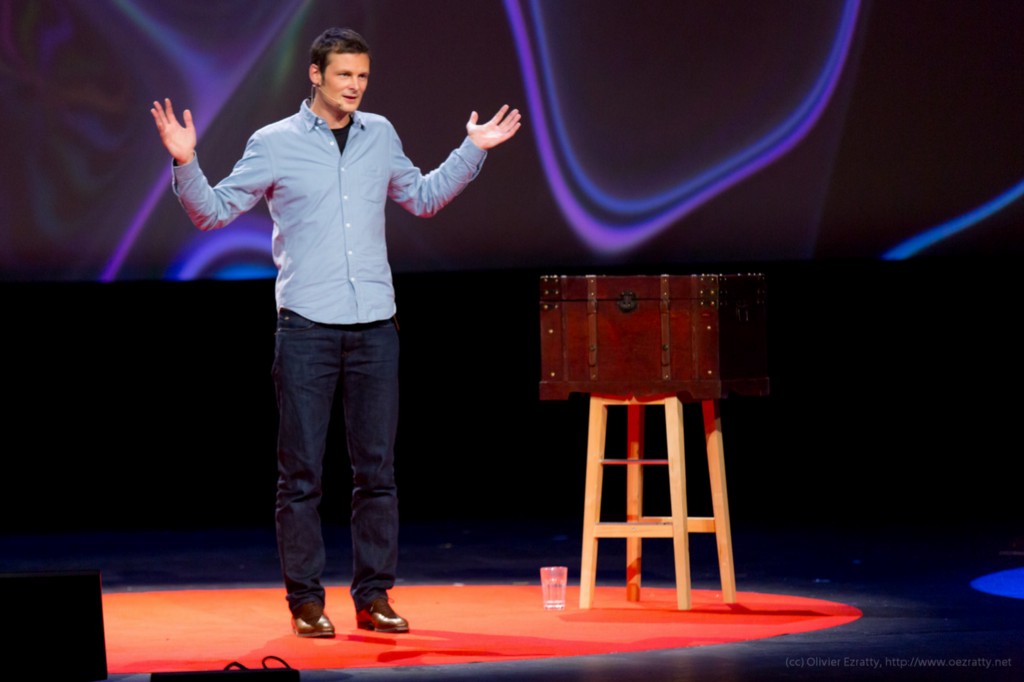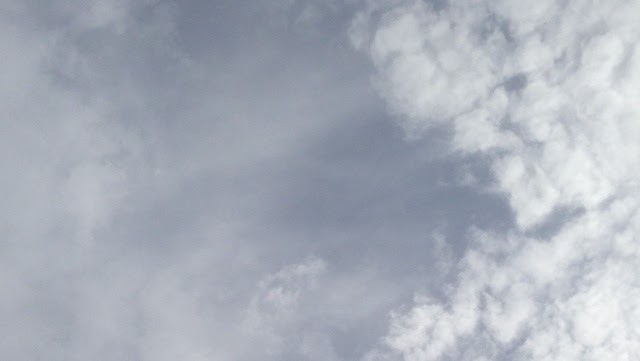The Shocking Essay Everyone's Talking About
by Brandi Builder

After I had sex with my brother I started to wonder if I should get a friend of mine to help me beat the shit out of him but before I could ask the guy he overdosed on opioids, which was probably for the best because he was a drag to follow on social media and anyway, I am too distracted by my addiction to amphetamines to do much at all these days except worry about the thing I found in my vagina.
Photo by AXL, via Shutterstock.
Make Time For Spacetime

Whenever I go on a trip, whether to a foreign country or just a state with a very different climate, I feel as though I’m in an alternate universe. The laws are different, I have to adjust my behavior accordingly, and I learn a few things about how the world actually functions by being an observer rather than a cog. When I come back to my normal life — where I live and work and all my toiletries are full-size — it seems to me as though no time has passed, largely because I have not observed it.
Reading The Universe in Your Hand, a new book from the French theoretical physicist Christophe Galfard, is a bit like going on one of these trips, with Galfard as your fixer and interpreter (he’s more than just a tour guide). The polyglot former grad student of Stephen Hawking wrote the book in breezy, conversational English (complete with one-line paragraphs), and promises to throw only one equation at you (E=mc2, and he doesn’t even use it that much). Unless you already happen to be a physicist or took a particularly thorough college-level course in astronomy, Galfard pretty much knows what you do and don’t know.
Galfard’s book is a triumph of straightforward (which is not to say simple) language. Already an international bestseller, it was first released in France in June 2015, followed by the U.K. version in August. Since he wrote it in English first, the book had to be translated into his native French; Galfard found the first pass unsatisfactory, and ended up largely re-writing it himself. The U.S. edition came out in March 2016, conveniently in time to account for the major announcement of the detection of gravitational waves, which provide experimental evidence for Einstein’s hundred-year-old theories.
Plain-English (and French and Greek and Italian — Galfard’s book will soon be available in more than a dozen languages) explanations of popular science and astronomy are nothing new. From Richard Feynman to Stephen Hawking, the enlightened have been bringing the cosmos to us in earthbound terms for decades. Where Carl Sagan used history and literature to explain astronomical phenomena and Neil de Grasse Tyson uses pop culture, Galfard is nearly absent of shtick. He uses pedestrian analogies and examples (cherry tomatoes, doting aunts, a robot with a sense of humor), and Nobel Prize-winning discoveries mark major inflection points. Some may read a whiff of condescension into his comparison of atoms swallowing electrons to “children being offered sweets at a party,” or when he confides, in the chapter about dark matter, “To be honest with you, you are not the first one to check out how fast these stars shoot around our galaxy.” But this may be an old habit — Galfard’s first books were all YA science-fiction, a French trilogy called Le Prince des nuages, and George’s Secret Key to the Universe, co-written with Stephen Hawking and his daughter, Lucy.
According to Galfard’s website, “The idea behind The Universe in your Hand was to write a pop-science book accessible to all in which the reader is the main character.” He uses the vehicle of first-person experience, narrated in the second person: Jay McInerney goes to space. The initial journey, with its beach setting and cast of characters who disbelieve your tale, bears some resemblance to the circumstances of Carl Sagan’s Contact: “deep inside yourself, you know that you experienced something very special and dreamt none of it.”
Reading the book feels like taking a class with an animated young professor, who takes his class on regular field trips to the planetarium. He goes through a series of gedanken experiments (what he calls “mind-trips”), some of which require you to shrink, Magic School Bus-style, into a mini-version of you (at one point, mini-you even catches an electron in your mini-hand). And because this is a class that lasts an entire semester (four hundred pages), he often recaps what he said at the last lecture (“what your mind did in Part One was to actually fly through a frozen 3D picture of the universe”), and previews what you’ll come across in future ones (“to…figure out what the Big Bang is will be your mission in Part Five”). There was enough repetition to make me conscious of the possibility of being quizzed — this is being repeated, so it must be important, I thought.
Theoretical physics is, after all, largely theoretical, so conceptual exercises like the ones Galfard takes us through are the best way to take a primer on a difficult subject — no textbooks, no equations, no chalkboard. Certainly no rockets. For kinesthetic learners (and, presumably, narcissists), it works very well. I had never really understood why spacetime was constantly being called a “fabric,” and how light can behave like both a particle and a wave — these are both facts I remember learning and memorizing many times over in school, but never internalizing in my own brainstem. I wrote in the margins, next to the introduction of Einstein’s general theory of relativity, “That was painless!” At another point, 246 pages in, I stopped and wrote, “Wait, what is a particle? Is it just a little part?” (Yes, it is, and after finishing the book I can safely say that particles are still the most confusing part about the universe. I would read an entire book about particles.)

Most people, when faced with the truths about the universe repeat some version of the scene from Annie Hall: a young Woody Allen learns the universe is expanding so he can’t do his homework. Galfard is breathless — “When you touch your skin, or someone else’s, you touch stardust,” he writes. His cheery enthusiasm unflappable, even in the face of the amazingly morbid — if you’ve accidentally traveled four hundred years into the future, all your loved ones are dead. Sorry! Moving on. Sometimes, Galfard veers into grandiosity: “However humble one needs to be before the majesty of nature, science, and only science, has given us eyes to see where our bodies are blind.”
Galfard’s wide-eyed wonder was on full display last month at Albertine, the French reading room on the Upper East Side attached to the embassy. Galfard is tall and slim, and he wore a black suit with navy shirt (no tie), the way a French man can do and get away with. He gave a short talk with Janna Levin, a physics and astronomy professor at Barnard, and the author of Black Hole Blues and Other Songs From Outer Space, which also came out in March.
“Did you feel something weird on September 14, 2015?” Galfard asked the audience. “That’s when the waves passed through you!” He was referring to the gravitational waves that were detected by the LIGO; if anyone laughed it was not audible. Levin, short and petite, dressed in all black, was somewhat more muted. She shared her previous ignorance, “I thought the time began at the time the universe was created.” But of course, now she knows, “Time went on in the past and will go forward in the future.” At one point, they brought up The Big Rip, the hypothesis about the ultimate fate of the universe that it expands so much it actually tears. “Don’t worry the sun will die before that happens,” Galfard reassured the audience “Don’t worry, the election is coming,” Levin added.
Both Galfard and Levin are disarmingly more attractive than you’d expect for a pair of astrogeeks, and both have their talking points down so pat that the phrase, “a trillionth of a trillionth of a trillionth of a second” rolls off their tongues. They’re practically made for the TED-talk circuit. The latest generation of space apostles knows their audience, and they swear space can be cool. “There is a moment in our past where the very notion of space and time break down — that is where theoretical physicists begin,” writes Galfard, excitedly. Onward and upward into the void, except, he reminds us: “there is no such thing as emptiness in this universe of ours.” You are not alone.

A few weeks ago, I sat with Galfard for two hours in Downtown Brooklyn while he answered questions on a Reddit AmA and sucked on an e-cigarette filled with something called “menthe fraiche alfaliquid.” (Two nights prior, he had lost his other e-cig somewhere inside Albertine; this one was his backup.)
“How do I choose which questions?” he asked, overwhelmed. There were already hundreds of questions waiting. When faced with one question about what lies beyond our universe, he mimicked typing while simultaneously mouthing, “read the book!” While writing up an explanation about the proof of the accelerated expansion of the universe, he forgot the names of the three 2011 Nobel Prize winners. “I forgot my book,” he told me, “it’s in there. That’s more reliable than Wikipedia.” I lent him my copy, and he looked up the answer using the index (Perlmutter, Schmidt, and Riess). As he typed, aware that I was watching him spell in his second language, he said self-consciously, “I shouldn’t hesitate.” He knew he knew the right words to use, but it made me wonder about the process of writing the book; whether and how much he self-doubted. He sprinkled his answers with idioms, too. “When you do like this,” he said, grabbing his hair, “is it draw your hair?” he asked. “Oh, pull.”
During a lull in the questions, I asked Galfard if he had seen the “Rick and Morty” episode about miniverses. He said he had, but I played the clip back for us anyway. “They are on acid!” he said. Around 4:15pm, he exclaimed, “At last! Someone who’s read my book.” He was genuinely pleased. He even did a few calculations, at first pulling up the Calculator application on his Macbook, then resorting to pen and paper. I handed him a ballpoint pen and on the back of an envelope so he could come up with the number a million billion — too many zeroes for the little gray and orange squares to handle.
After he decided he’d answered as many questions as he could, I asked Galfard if anyone ever called him the French Neil de Grasse Tyson. “No!” he said. He leaned in conspiratorially and whispered, “I am better than him! His shows don’t pull on your heart.” Galfard is definitely aiming for the heart, or at least somewhere in the chest. He compared people’s fear of space to children’s fear of the dark. “Thanks to science,” he said, “we have shed some light, and written the history of the stars and our universe.” Galfard believes everything can be turned into a story that can make you feel less afraid and at sea, and so far he is not wrong. His next book will be about the origins of life; “I only stick to humble topics,” he said.
The Universe in Your Hand is a dual lesson in humility; you have to be okay with letting Galfard spacesplain to you. But the real test of a good trip is the memories you come back with, to say nothing of the postcards and pictures. Space is worth the imaginary voyage, if only so you can finally understand the point of accelerating a particle, and what on earth it might have to do with the cosmos. The most salient simile I internalized after reading the book was about the quantum world: just because you can see or detect a particle does not mean that is the particle’s only reality. In fact, the particle is ubiquitous — a mixture of possibilities. Galfard writes, it’s as though “all the thoughts you may or may not have at some point in our life on a given subject suddenly become reduced to one as someone hears you speak it out loud.” It’s not fair to reduce a wily particle to its observable nature. But humans are not operating in a quantum world; we have no such excuse. You are what you tweet! Now give me back my full-sized conditioner.
Photo: TEDx Paris / Olivier Ezratty
"Put the 'I' into perspective and then go away"
If it is too much to hope for a brilliant author who simply writes her books and then walks away without saying anything further so that the work stands on its own — and I suppose that it is, living as we do in an age where marketing is paramount and “our brands could be your life” is the message with which we are incessantly bombarded — the closest thing we have is probably Elena Ferrante, who might be doing a few too many interviews for someone whose anonymity is so admirable, but who remains someone worthy of attention whatever she says.
Where Len Is Now
I was once talking to a Canadian acquaintance about my love for Len’s “Steal My Sunshine” (my knowledge of Canada is limited for conversational purposes to Len’s “Steal My Sunshine,” the oeuvre of Leonard Cohen and the dental condition of various hockey personalities), and she told me that one evening in Toronto she and her friends were out doing karaoke when members of Len showed up and sang that very song. “Wow,” I responded in my typical asshole way, “it’s great that they could all get off work.” As is so often the case with my chronic attempts at snide humor, I was way off base. This interview with main guy Marc Costanzo — “we spoke on the phone while he went about his day, occasionally pausing our conversation to comment on the price of premium olive oil while grocery shopping” — is delightful, and it sounds like he can take off from work whenever he likes.
Sure, Venmo Is What's Making Young People Terrible
Is Venmo turning an entire generation of bright, tech-savvy people — a group so accustomed to interacting with each other through the safe space created in the virtual world provided by the smartphones upon which they are so dependent that they have become incapable of experiencing existence without them — into assholes?
Everything's Going To Hell But At Least We Are Moving Away From Open Kitchens In Our Homes

You guys, don’t you hate it when you have a dinner party and everyone in the loft is hanging around your open-plan kitchen? The Times has great news!
[T]he pendulum has started to swing back toward enclosed kitchens. Several new residential buildings in Manhattan have offered separated kitchens — a nod to prewar apartment design, but also to the growing demand from potential buyers looking for separate cooking and entertaining spaces.
I know whenever I’m entertaining I wish my space were more reflective of the elegance we all associate with prewar construction. It makes me feel like a failure when I see a group of people congregating in my postwar apartment’s food prep area. Plus, we all know how awkward it is when we have the hired help getting things together in there and the friends and colleagues we’ve invited into our homes have to look at them. “You don’t want your dinner party guests to walk through the kitchen and see what’s being served,” says some real estate guy, and boy is he ever right. Just last weekend some of the people I was entertaining wandered through my open-plan kitchen and my private chef made eye contact with them. He even asked how they were doing and told them to “have a good one” as they backed away. I’ll tell you, I wanted to die.
Look, I don’t want to overstate the importance of this, but I also feel like we need to take time out in our lives to acknowledge the bright moments. I think we can all agree that while the world is still a crazy, chaotic place and danger is never far away, the comeback of the closed kitchen can give us a little hope that things are finally starting to make sense again. Even something as simple as the renewed appeal of pocket doors — “a design accent that seems to be gaining popularity” — makes you feel a little better about the world and your place in it. And that is the kind of happiness money can’t buy. Unlike an enclosed kitchen, which it certainly can.
What Thing That Will Kill Us All Won The Week?
Wow, antibiotic-resistant bacteria is really having a moment, huh? If I’m Zika, I’m shouting down the phone at my PR person right now wondering what I have to do to get this kind of coverage.
Maria Usbeck, "Ciudad Desnuda"
Many of us can no longer remember when it began, but it was back before we had given up hope and descended into a grim and joyless acceptance. The plodding pace by which it progressed — although you would be forgiven for not noticing any forward motion as it occurred, so imperceptible was its movement — caused even the most optimistic amongst us to despair of the possibility that we might ever see something like the midpoint. And yet, somehow, through all our toil, sweat and tears, we survived long enough that we can finally say we arrived at its end. That’s right, the longest week of 2016 thus far is almost over. I’m very proud of all of you who managed to hang on for the whole ride. Here’s another one from Maria Usbeck. Enjoy. You deserve it.
New York City, May 18, 2016

★★ The light was still dim but the clouds were weakening. Before the end of the morning, the sun was coming down clear. Cirrus in rows like a slab of spareribs drifted above Fifth Avenue. Then the blue grayed out again and the pedestrians lost their shadows. A dampening quasi-rain fell on or leaned onto the commute.
Artist Disliked
Calling Jeff Koons “the Donald Trump of art” is the nicest thing this guy has to say about him.
